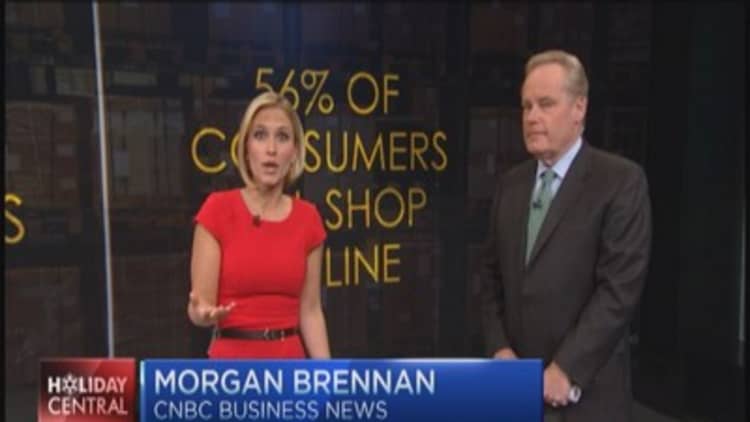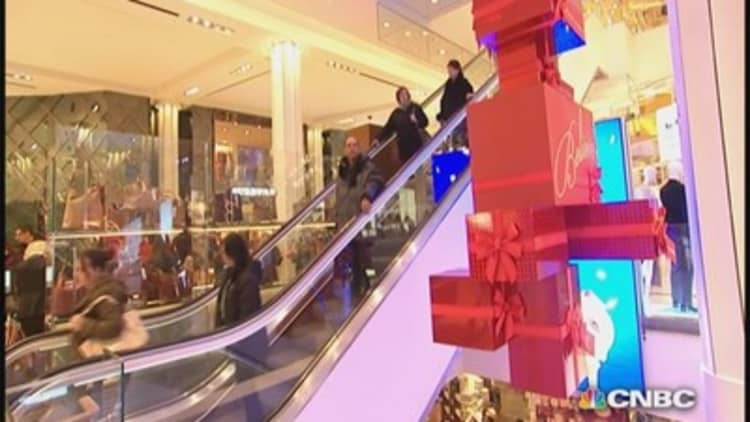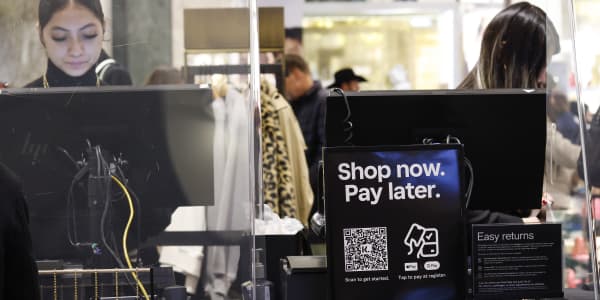


Not a day goes by when there isn't talk of the various implications online shopping has had on the physical store.
But what about when the influx of Web shoppers becomes so great, it knocks down the online capabilities of some of the country's biggest retailers, right where they're counting on their biggest sales gains?
During the critical Black Friday shopping weekend, electronics retailer Best Buy experienced intermittent issues with its website, which led to extended periods when shoppers couldn't even browse its page.
But while Best Buy's outage was arguably the highest profile of the past week, the electronics chain was hardly the only company to experience issues.
Read MoreBlack Friday (literally): Best Buy goes dark
On Friday, specialty retailer Topshop apologized on social media for problems that prevented its website from loading, while Tesco also experienced technical difficulties. According to data from application monitoring system Dynatrace, Cabela's also had a few hard outages on Black Friday, and Foot Locker experienced some configuration issues that caused glitches in its site.
According to Catchpoint Systems, which monitors the performance of Web applications, Neiman Marcus' site was also down for about two hours on Saturday night.
"These are issues with high-profile retailers," Dynatrace's David Jones said.

Jones added that in many cases, the cost of coming up with a proactive solution does less damage to a retailer's bottom line than the lost sales it could incur from an outage.
Scot Wingo, CEO of e-commerce optimization firm ChannelAdvisor, said in a worst-case scenario, a retailer could lose about 8 percent of the day's online sales for each hour it's down. But since consumers oftentimes revisit problematic sites, retailers typically lose about 4 percent of that day's sales each hour they're down.
Lost sales were one reason why it came as a surprise to many that Best Buy would proactively take down its site on Black Friday, a day that saw online sales increase by 24 percent compared with last year, according to Adobe. Jones said Best Buy's site must have been experiencing major issues to require a reboot.
"What they're talking about, it makes sense, but it was definitely something that was unplanned," he said.
In addition to building out the infrastructure, Jones emphasized that retailers need to test their systems proactively, and monitor 100 percent of their traffic to check for errors.
"You can't take little snapshots of data," he said.
Shift to mobile a 'sea change'
The biggest reason retailers struggled to meet online demand this year was a result of the "sea change in the industry," Jones said. In particular, it's the rapid adoption of mobile platforms that threw companies off.
That's because retailers' mobile sites use what's called responsive Web design, a tool that reformats content that's delivered on a mobile device. If a retailer doesn't do a good job making its responsive Web design function exactly the way it should, it can shake the company's technological infrastructure to the core, Jones said.
At Best Buy, the company attributed its crash to "record levels" of traffic, including a "concentrated spike in mobile traffic." The retailer temporarily shuttered its site to restore its performance.
Read MoreNo way Black Friday sales fell 11 percent: Analyst
"Many of these retailers, they're not necessarily configured correctly to deal with that increase in mobile traffic," Jones said. "Ultimately what I think it boils down to is the applications that they manage are just incredibly complex."
According to IBM Digital Analytics Benchmark, this year was the first time when the weekend after Thanksgiving saw mobile traffic account for more than half of all online traffic. That followed an increase in mobile share on both Thanksgiving and Black Friday, as well.
But it isn't just the shift to mobile that's complicating retailers' performance. Wingo said retailers can see their traffic spike between 6 and 10 times what's typical over the Black Friday/Cyber Monday period.
"It is a very hard kind of computer science problem," he said. "How do you prepare for that?"
What it can cost retailers
It's particularly hard considering retailers are reluctant to spend millions of dollars to build out capacity for their online operations, when they don't need as much infrastructure during other parts of the year. One solution is leasing space from a cloud-based server, which can be done through Microsoft or Google, Wingo said.
Rob Enderle, analyst for the Enderle Group advisory firm, said these contracts can cost as much as $1 million a year or more. All in, Wingo estimates that retailers spend anywhere from 10 percent to 30 percent of their online revenue on capital expenditures to make their websites function quickly and properly.
Read MoreYou've never gone holiday shopping like this
Though these figures can add up quickly for a retailer, Wingo doesn't think it's this hefty investment that's caused their hiccups, he said. Instead, it's the fact that they've underestimated the systems that need to be in place for things to run smoothly during peak traffic times.
"Consumer behavior's changed a lot faster than we thought," he said. "A lot of retailers that I've talked to have been caught by surprise by that."





